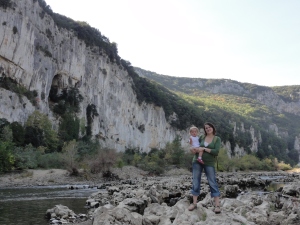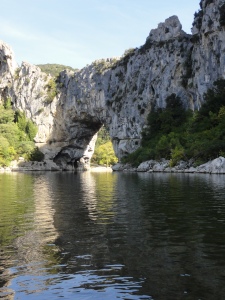I came across the following recently while bimbling around on the internet, a bulleted essay, outling the ten most important rules of expedition behaviour.
It makes me laugh, especially rule #6 and #7. There should be another added to that – never ask what the time is. Given the proliferation of devices that tell the time these days, there is no excuse for asking the time.
A leader has better things to do than act as a time keeper!
Anyway, here it is, courtesy of Howard Tomb.
—
Expedition Behavior
The Finer Points
Howard Tomb
A good expedition team is like a powerful, well-oiled, finely tuned marriage. Members cook meals together, carry burdens together, face challenges together and finally go to bed together.
A bad expedition, on the other hand, is an awkward, ugly, embarrassing thing characterized by bickering, filth, frustration and crispy macaroni.
Nearly all bad expeditions have one thing in common: poor expedition behavior (EB). This is true even if team members follow the stated rules, such as Don’t Step on the Rope, Kerosene and Food, No Soap in the River, No Raccoons in the Tent, Keep your Ice Axe Out of My Eye, etc.
Unfortunately, too many rules of expedition behavior remain unspoken. Some leaders seem to assume that their team members already have strong and generous characters like their own. But judging from a few of the campers we’ve encountered, more rules ought to be spelled out. Here are ten of them.
RULE #1 Get the hell out of bed.
Suppose your tentmates get up early to fetch water and fire up the stove while you lie comatose in your sleeping bag. As they run an extensive equipment check, coil ropes and fix your breakfast, they hear you start to snore. Last night you were their buddy; now they’re drawing up list of things about you that make them want to spit. They will devise cruel punishments for you. You have earned them. The team concept is now defunct. Had you gotten out of bed, nobody would have had to suffer.
RULE #2 Do not be cheerful before breakfast.
Some people wake up perky and happy as fluffy bunny rabbits. They put stress on those who wake up mean as rabid wolverines. Exhortations such as “Rise and shine, sugar!” and “Greet the dawn, pumkin!” have been known to provoke pungent expletives from rabid wolverine types. These curses, in turn, may offend fluffy bunny types. Indeed, they are issued with the sincere intent to offend. Thus, the day begins with flying fur and hurt feelings. The best early morning behavior is simple: Be quiet.
RULE #3 Do not complain.
About anything. Ever. It’s ten below zero, visibility is four inches and wind driven hailstones are embedding themselves in your face like shotgun pellets. Must you mention it? Do you think your friends haven’t noticed the weather? Make a suggestion. Tell a joke. Lead a prayer. Do NOT lodge a complaint! Your pack weighs 87 pounds and your cheap backpack straps are – surprise!, surprise!, – cutting into your flesh. Were you promised a personal sherpa? Did somebody cheat you out of a mule team? If you can’t carry your weight, get a
RULE #4 Learn to cook at least one thing right.
One expedition trick is so old that it is no longer amusing: on the first cooking assignment, the clever cook prepares a dish that resembles, say, Burnt Socks in Toxic Waste Sauce. The cook hopes to be relieved permanently from cooking duties. This is the childish approach to a problem that’s been with us since people first started throwing dead lizards on the fire. Tricks are not a part of a team spirit. If you don’t like to cook, say so. Offer to wash dishes and prepare the one thing you do know how to cook. Even if it’s only tea. Remember that talented camp cooks sometimes get invited to join major expeditions in Nepal, all expenses paid.
RULE #5 Either A) Shampoo, or B) Do not remove your hat for any reason.
After a week or so on the trail, without shampooing, hair forms angry little clumps and wads. These leave the person beneath looking like an escapee from a mental ward. Such and appearance could shake a team’s confidence in your judgment. If you can’t shampoo, pull a wool hat down over your ears and leave it there, night and day, for the entire expedition.
RULE #6 Do not ask if anybody’s seen your stuff.
Experienced adventures have systems for organizing their gear. They very rarely leave it strewn around camp or lying back on the trail. One of the most damning things you can do is ask your teammate if they’ve seen the tent poles you thought you packed 20 miles ago. Even in the unlikely event you get home alive, you will not be invited on the next trip. Should you ever leave the tent poles 20 miles away, do not ask if anybody’s seem them. Simply announce, with a good-natured chuckle, that you are about to set off in the dark on a 40 mile hike to retrieve them, and that you are sorry. It’s unprofessional to lose your spoon or your toothbrush. If something like that happens, don’t mention it to anyone.
RULE #7 Never ask where you are.
If you want to know where you are, look at the map. Try to figure it out yourself. If you’re still confused, feel free to discuss the identity of landmarks around you and how they correspond to the cartography. If you A) suspect that a mistake has been made; and B) have experience in interpreting topographical maps, and C) are certain that your group leader is a novice or on drugs, speak up. Otherwise, follow the group like a sheep.
RULE #8 Always carry more than your fair share.
When the trip is over, would you rather be remembered as a rock or a sissy? Keep in mind that a pound or two of extra weight in your pack won’t make your back hurt any more than it already does. In any given group of flatlanders, somebody is bound to bicker about your weight. When an argument begins, take the extra weight yourself. Then shake your head and gaze with pity upon the slothful one. This is the mature response to childish behavior. On the trail that day, during a break, load the tenderfoot’s pack with 20 pounds of gravel.
RULE # 9 Do not get sunburned.
Sunburn is not only painful and unattractive, it’s also an obvious sign of inexperience. Most green horns wait too long before applying sunscreen. Once you’ve burned on an expedition, you may not have a chance to get out of the sun. Then the burn gets burned, skin peels away, blisters sprout on the already swollen lips. Anyway, you get the idea. Wear zinc oxide. You can see exactly where and how thickly it’s applied and it gives you just about 100% protection. It does get on your sunglasses, all over your clothes and in your mouth. But that’s OK. Unlike sunshine, zinc oxide is non-toxic.
RULE #10 Do not get killed.
Suppose you make the summit of K2 solo, chain-smoking Gitanes and carrying the complete works of Hemingway in hardcover. Pretty macho, huh? Suppose now that you take a vertical detour down a crevasse and never make it back to camp. Would you still qualify as a hero? And would it matter? Nobody’s going to run any fingers through your new chest hair. The worst thing to have on your outdoor resume is the list of the possible locations of your body.
All expedition behavior really flows from this one principle: Think of your team, the beautiful machine, first. You are merely a cog in that machine. If you have something to prove, forget about joining an expedition. Your team will never have more than one member.




